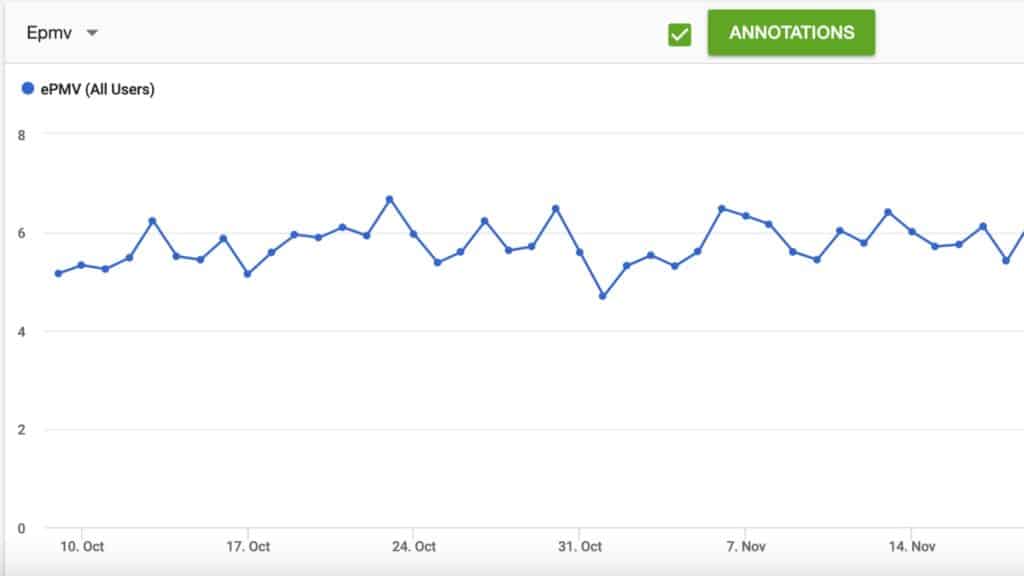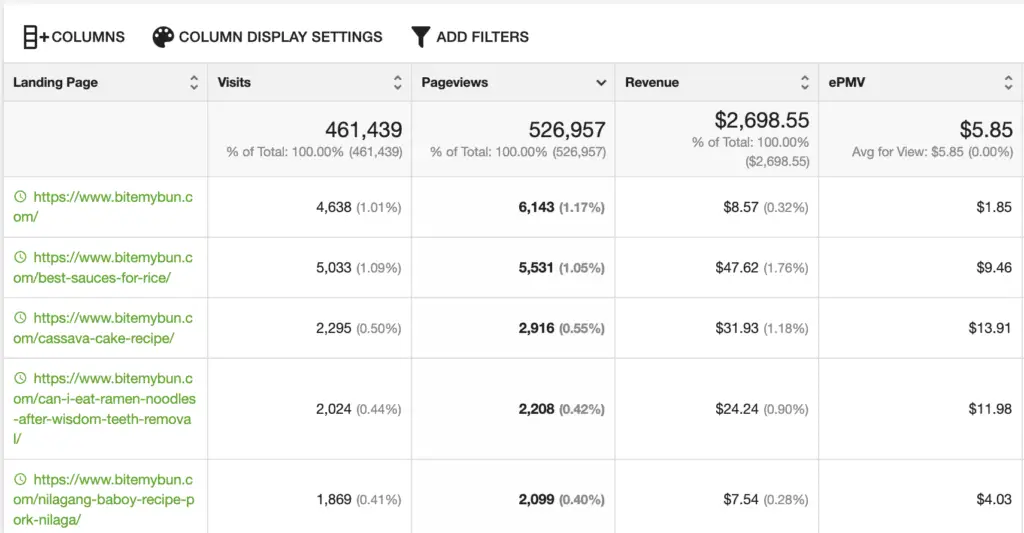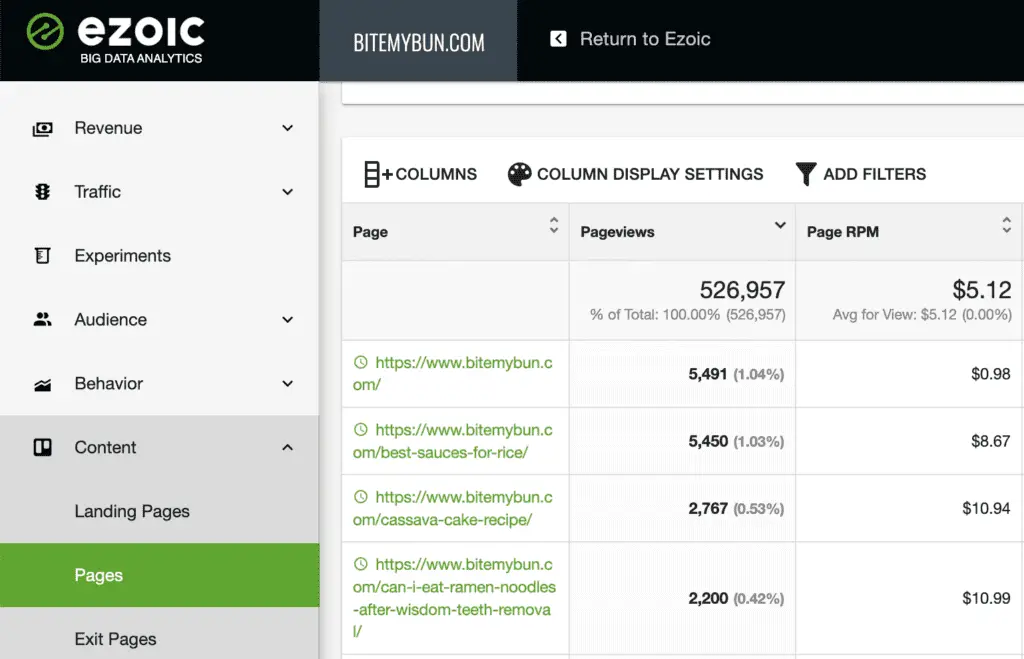ePMV is a metric created by Ezoic to calculate the revenue per 1,000 visitors from advertisements on a site.
Ezoic uses the metric ePMV instead of RPM because they tend to focus more on user experience on the site than other networks do.

ePMV is “Earnings per mille visitors” or earnings per thousand visitors.
Site ePMV = (estimated earnings / number of visitors) * 1000
RPM calculates how much money you’ve made per 1000 page views. It’s calculated based on your traffic, CTR (click-through rate) and CPC (cost per click).
Page RPM = (estimated earnings / number of pageviews) * 1000
Ezoic wants to maximize the revenue per visitor, not per pageview. It may seem like a small difference, but it’s not.
If you try and maximize the revenue per pageview, you’ll cram as many ads on a page for a visitor to see.
With ePMV though, you want to decrease the number of ads on a page, so you can increase the likelihood of visitors checking out more pages on the site, loading more ads on the next pageview as well.
So Ezoic’s algorithms are tuned to increasing user experience as well as revenue.
The downside is that it’s impossible to calculate a page’s ePMV.
You can calculate a landing page’s ePMV, which is the revenue earned from visits starting at the landing page:

But you can’t calculate the ePMV for a single page. Which is why Ezoic doesn’t show ePMV on the “Pages” tab in Big Data Analytics, but reverts to Page RPM:

Joost Nusselder is The Content Decoder, a content marketer, dad and loves trying out new tools en tactics. He's been working on a portfolio of niche sites since 2010. Now since 2016 he creates in-depth blog articles together with his team to help loyal readers earn from their own succesful sites.
